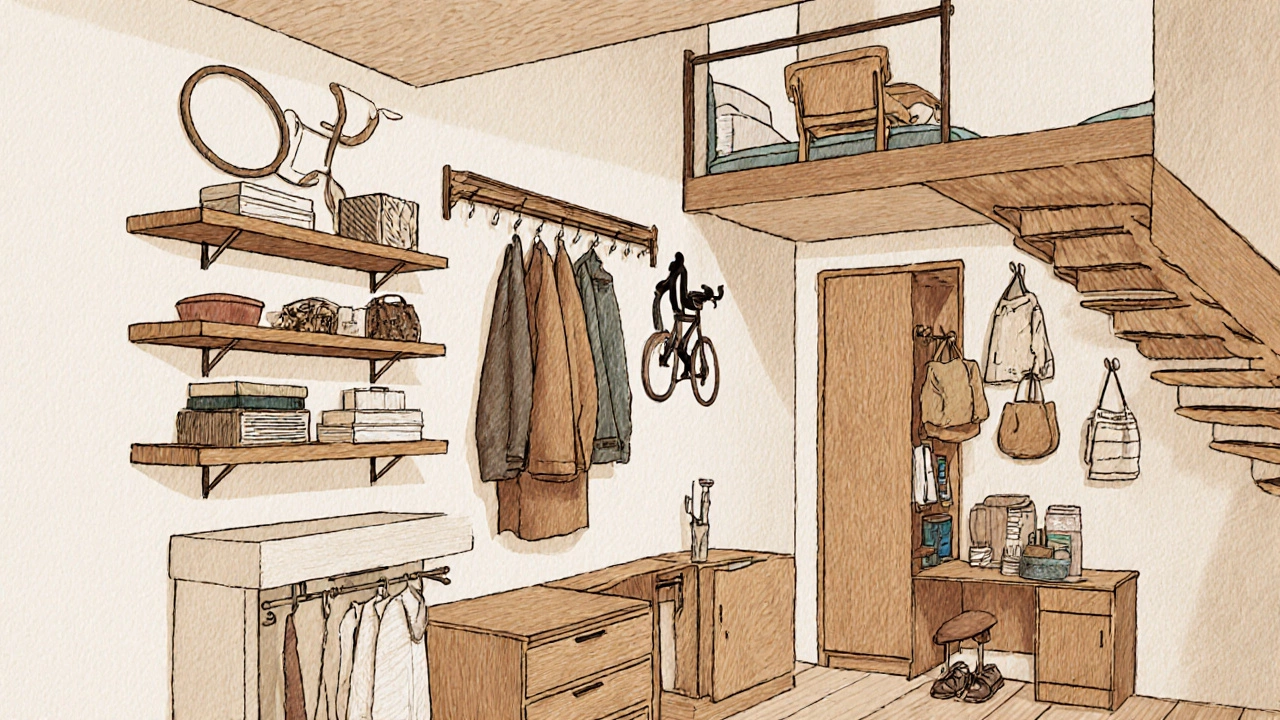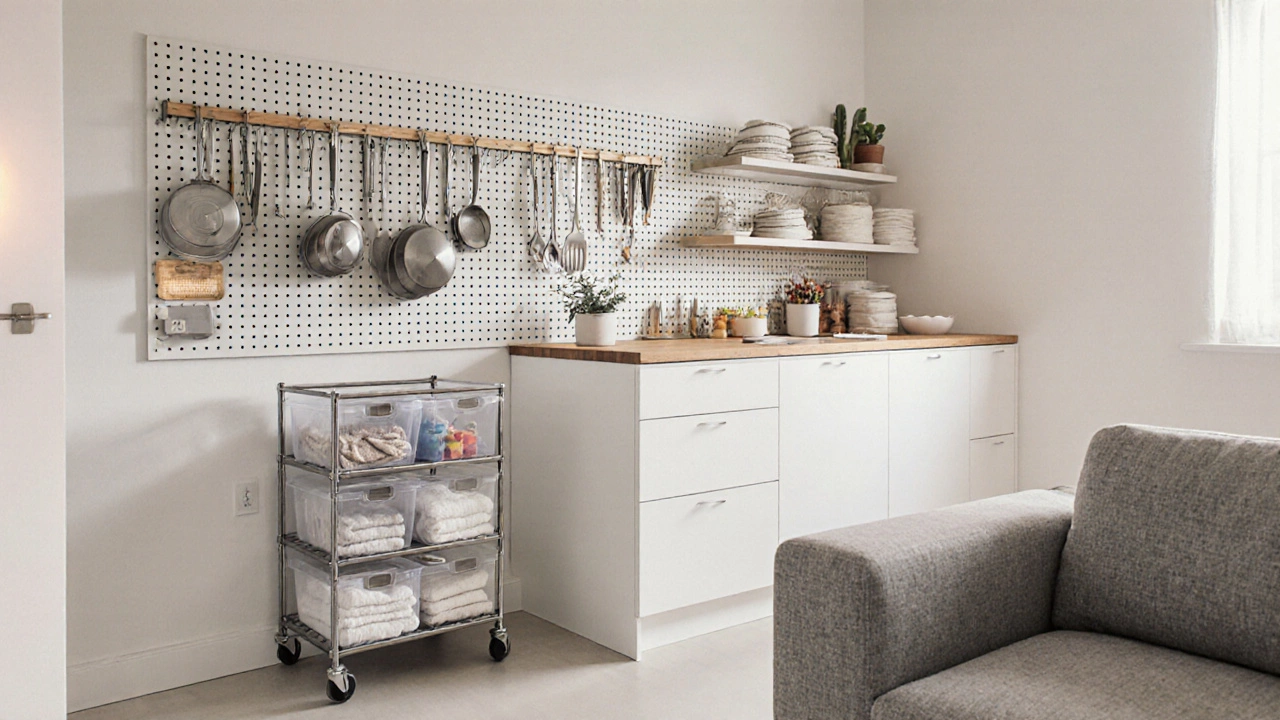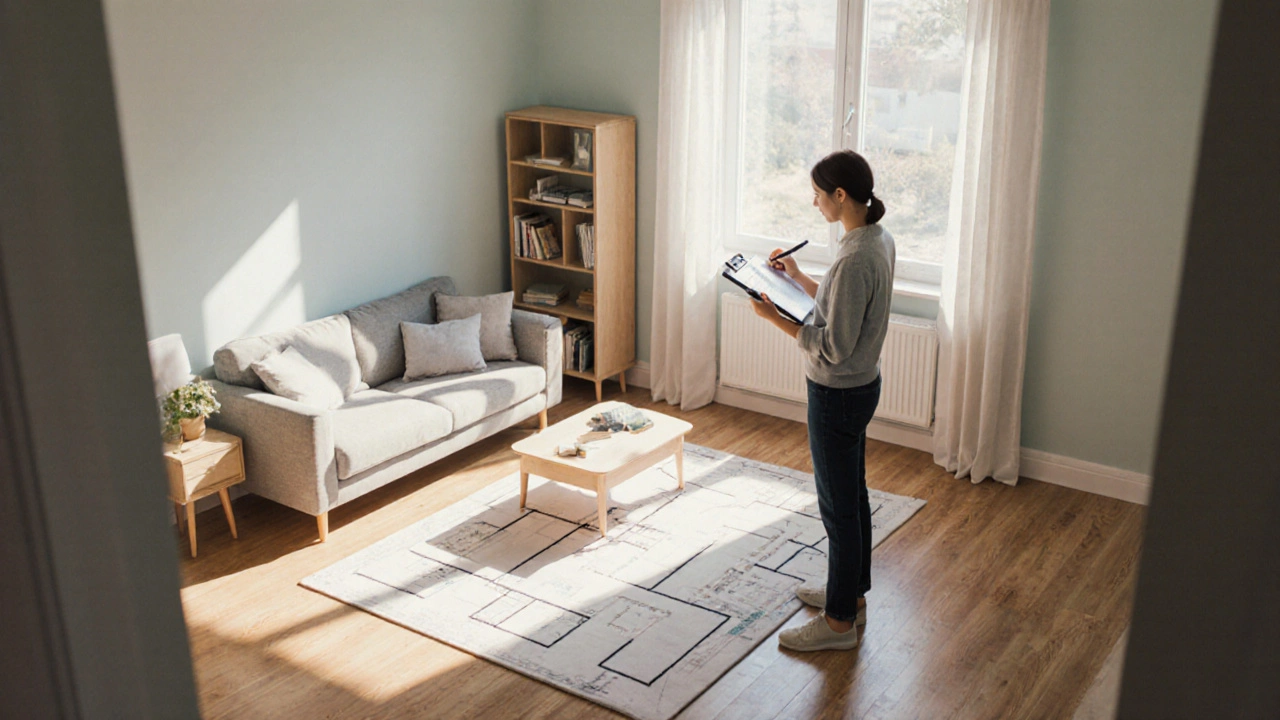Living in a compact home can feel cramped, but the right storage tricks can turn tight corners into useful space. Below you’ll find step‑by‑step ideas that let you keep the things you love without drowning in clutter.
Start with a Smart Plan
Before you buy anything, walk through each room and ask yourself: "What am I storing here and how often do I need it?" Jot down the items that you use daily, weekly, and rarely. This simple audit helps you decide where to place high‑frequency items (near the front) and where to tuck away the occasional ones (higher up or deeper).
Think Vertically
Floor space is the most limited resource in a small house. Using the walls turns empty blank space into storage gold.
- Wall‑mounted shelves are a low‑cost way to store books, kitchenware, or decorative boxes. They keep items off the floor and draw the eye upward, making the room feel taller.
- Floating cabinets in the bathroom create a sleek look while holding toiletries.
- High‑placed hooks can hold coats, bags, or even bicycles in a garage.
When you install shelves, keep the topmost layer for items you use rarely. That way you avoid constantly climbing up and down.
Hide Storage Behind Everyday Objects
Dual‑purpose pieces let you store without adding extra furniture.
- Multi‑functional furniture combines seating, sleeping, or work surfaces with built‑in storage compartments. A sofa with a lift‑up cushion can hide blankets and pillows.
- Storage ottoman offers a place to sit, a footrest, and a hidden bin for magazines or toys.
- Foldable furniture like wall‑mounted desks that collapse when not in use, freeing floor space for other activities.
Look for pieces that match your style so the storage feels intentional, not tacked on.
Utilize Nooks and Crannies
Every small house has odd spaces that are often ignored. Turn them into storage opportunities.
- Under‑stair storage can be built as pull‑out drawers or a shallow bookshelf. Even a simple basket can hold shoes or cleaning supplies.
- A Loft bed creates a free area underneath for a desk, lounge, or wardrobe. This works especially well in kids' rooms.
- Install a Pegboard system in the kitchen or garage to hang utensils, tools, or gardening gear. The metal grid is cheap and re‑configurable.
When you build around these spots, you gain storage without sacrificing the room’s layout.

Compact Containers and Bins
Choosing the right containers can shrink the visual clutter.
- Vacuum‑seal bags compress blankets, seasonal clothing, or linens, saving up to 80% of space.
- Clear acrylic bins let you see contents at a glance, reducing the need to rummage through boxes.
- Label every bin with a hand‑written tag or a printable label to speed up finding items.
Stackable bins fit nicely on shelves, while low‑profile boxes can sit under a couch or bed.
DIY Projects for Extra Space
Sometimes the best solution is a custom one. Here are three beginner‑friendly projects.
- Floating desk with hidden drawers: Mount a simple tabletop on brackets, add shallow drawers beneath, and you have a sleek work area with built‑in storage for stationery.
- Pull‑out pantry: In a narrow hallway, install two sliding shelves that can be pulled out like a pantry drawer. Use it for canned goods, spices, or snacks.
- Window seat with storage: Build a cushioned bench that opens like a chest. Store blankets, books, or toys inside while adding a cozy reading nook.
All three projects use inexpensive lumber, hinges, and a drill-tools you likely already own.
Rolling Carts and Mobile Units
A mobile storage unit can move wherever you need it.
- Rolling carts are perfect for kitchen supplies, bathroom essentials, or craft materials. When not in use, tuck them under a table.
- A small Kitchen island with wheels can double as a prep surface and a pantry for pots and pans.
Choose carts with a weight limit that matches what you’ll store; otherwise the wheels can wobble.

Maintain the System
Even the best storage plan falls apart if you don’t keep it tidy. Adopt these habits:
- Spend five minutes each night returning items to their designated spot.
- Do a quarterly purge: if you haven’t used something in three months, consider donating it.
- Re‑evaluate your layout every year. As families grow or hobbies change, the storage needs shift.
Consistent upkeep ensures the space stays functional and avoids the dreaded “everything is out of place” feeling.
Quick Comparison of Popular Small‑House Storage Options
| Solution | Cost | Installation | Space Saved | Best For |
|---|---|---|---|---|
| Wall‑mounted shelves | Low | Simple DIY | 10‑20% | Living room, hallway |
| Multi‑functional furniture | Medium‑High | Buy‑in‑place | 25‑35% | Living room, bedroom |
| Under‑stair storage | Medium | Professional install | 15‑25% | Entryway, mudroom |
| Loft bed with desk | High | Professional or DIY | 30‑40% | Kids' rooms |
| Rolling carts | Low | Plug‑and‑play | 5‑10% | Kitchen, office |
By matching your budget and style to the right solution, you can maximize storage without sacrificing comfort.
Frequently Asked Questions
What’s the first step to creating more storage?
Start with a simple inventory. List what you own, how often you use each item, and where you currently keep it. This reveals duplicates and identifies the biggest pain points.
Can I add storage without drilling into walls?
Yes. Use tension‑rod curtains, over‑door organizers, adhesive hooks, and freestanding shelves that rely on floor weight instead of wall anchors.
How do I keep floor space clear?
Choose furniture that lifts items off the ground-think raised platforms, bed frames with storage drawers, or wall‑mounted desks. Keep only daily‑use items on the floor.
Are vacuum‑seal bags safe for long‑term storage?
They are great for textiles and seasonal clothing when stored in a cool, dry place. Avoid sealing items that need airflow, like leather or certain fabrics that could develop mildew.
What’s the best way to organize a small kitchen?
Use vertical dividers inside cabinets, install a pegboard for pots and utensils, and keep frequently used items in pull‑out drawers near the stove. Store rarely used appliances on high shelves.
With these ideas in place, your small house can feel airy, organized, and ready for anything you throw its way.
